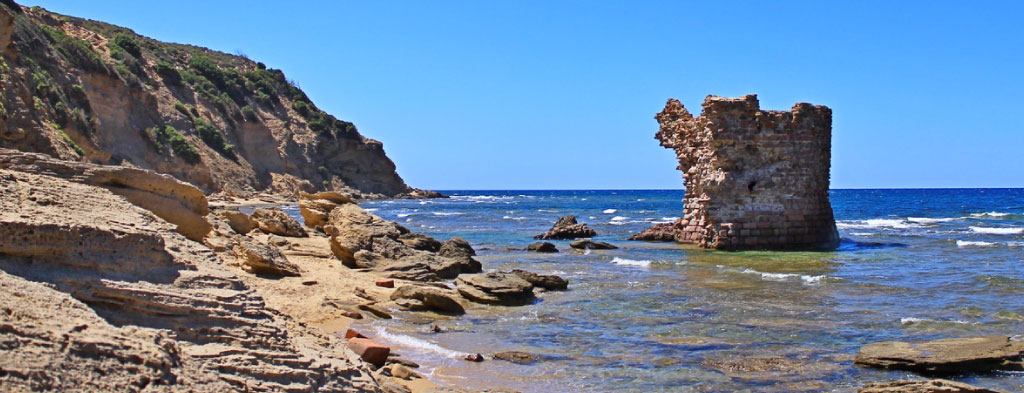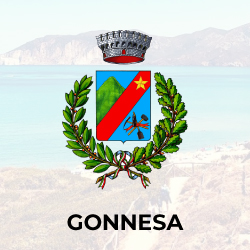
Porto Paglia: verdant limestone cliffs
Porto Paglia is the first stretch of the enchanting coast of Gonnesa, dominated by an ancient tonnara, along the high coasts of the Iglesiente, in the south-west of Sardinia.
This wonderful oasis is ideal for all tastes, from lovers of relaxation in nature and romantic atmospheres, to lovers of sea sports. Porto Paglia is 6 km to Gonnesa and about 70 km to Cagliari – Elmas airport.
The marina of Gonnesa is an enchanting expanse of three and a half kilometres of soft and compact sand, with a beautiful color between amber and gold inside the Golfo del Leone (or of Gonnesa): a magnificent sequence of panoramas with fossil dunes dotted with Mediterranean green, contrasting with the whiteness of the sand and the changing colors of the sea, from emerald green to blue. The beach has no interruption, but you can anyway distinguish at least four “beaches” corresponding to the accesses: Porto Paglia, Punta S’Arena, Plag’e Mesu and Funtanamare.
Porto Paglia, the southernmost part of the marina of Gonnesa, represents the border between the coast of the Iglesiente and the coast of the Sulcis, with its reliefs extending to the sea with verdant limestone cliffs.
The site takes its name from the ancient tonnara, one of the most productive in the Mediterranean since its creation in the 18th century.
This imposing complex formed by the dwellings of the tonnarotti and the dock dominates the promontory south of the gulf and was renovated for tourist use at the end of the 20th century.
Porto Paglia Beach, about half a kilometre, is of light sand with golden and pink shades, and emerging trachytic rocks here and there.
The seabed is sandy for long stretches, then deep with pebbles. Winds and currents often agitate these clear waters, so the beach is loved by kite and wind surfers
Fisherman’s House or Tonnara Church
Before the beach we find a wild stretch of coast, with pebbly coves framed by walls of trachytic rocks overlooking the sea, once crossed by the railway line that connected the Iglesiente mines to Portovesme.
Right at the southern end of the beach, a very popular area among scuba divers, a small house built directly on the rocks, perhaps once a church, stands out in a surreal setting.
Reachable from the ground with a short walk on the outcropping rocks, this is the only church in Sardinia also accessible from the sea with a small quay on the front of the building.
Along the path we find the remains of a Spanish tower built against pirates, and finally, in the sandstone ravines that surround the beach, hawks nest.
Plag’e Mesu, “middle beach”, is the central stretch of the gulf: a huge band of fine golden sand, never crowded, not even in summer.
On the beach of Fontanamare, the northernmost one, bordered by a cliff and the remains of the mining port, you can admire the Gonnesa dunes, shaped by the mistral, in one of the Sardinian coastal stretches most frequented by surfers.
Just beyond the gulf, the limestone rock of Pan di Zucchero stands out, the highest rock in Europe that emerges majestically from the water. Bordering the beach, a pine forest flanks the Sa Masa swamp, a paradise for birdwatchers and home to rare water birds, including the Gallinule.
Photo Credits by piantisergio

In this area you will be directed to the website of the municipality of Gonnesa to get all the information on this location.
Click to Access

In this area you will be directed to the Gonnesa Turismo website to get a lot of tourist information about the locality
ClicK to Access


